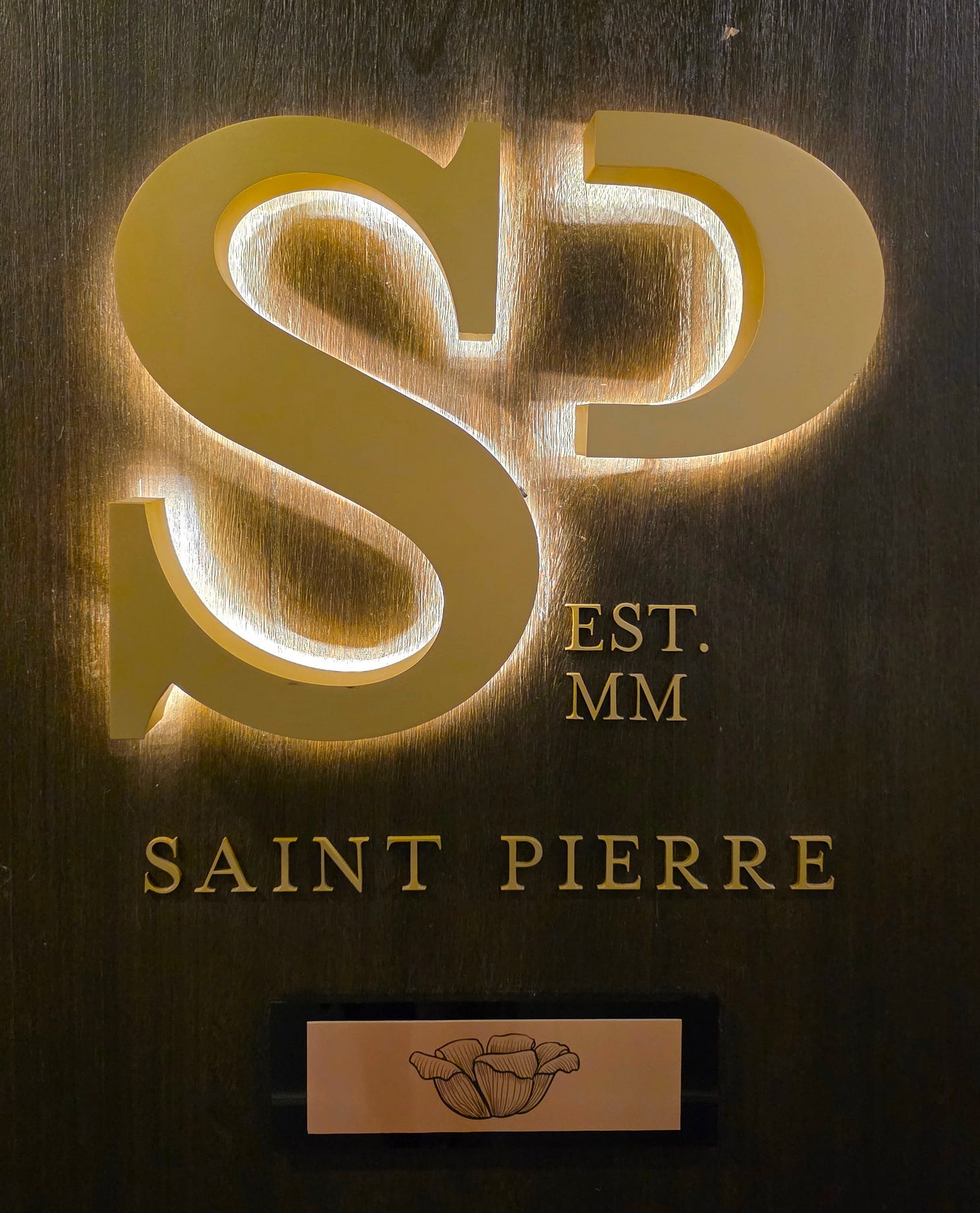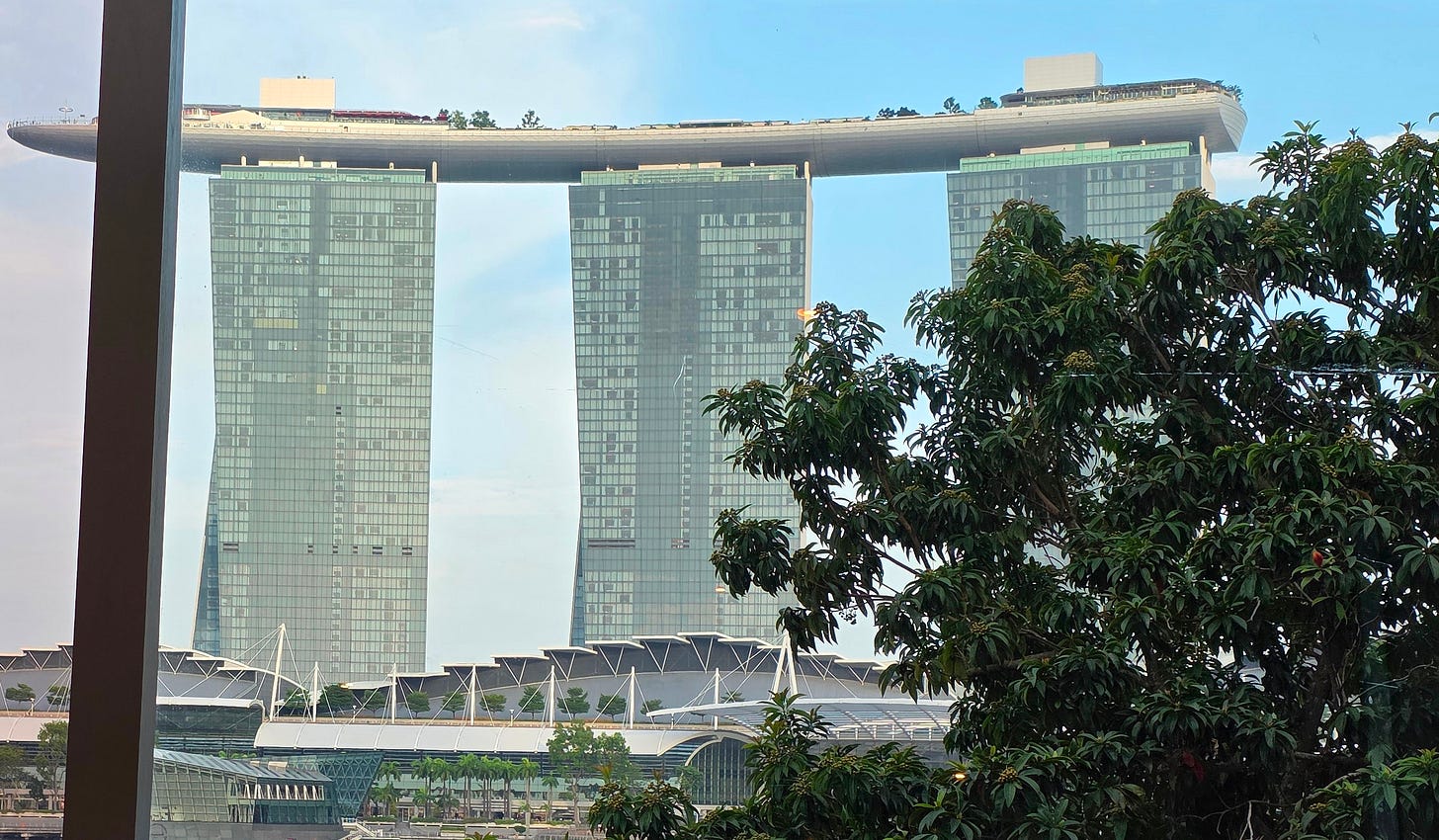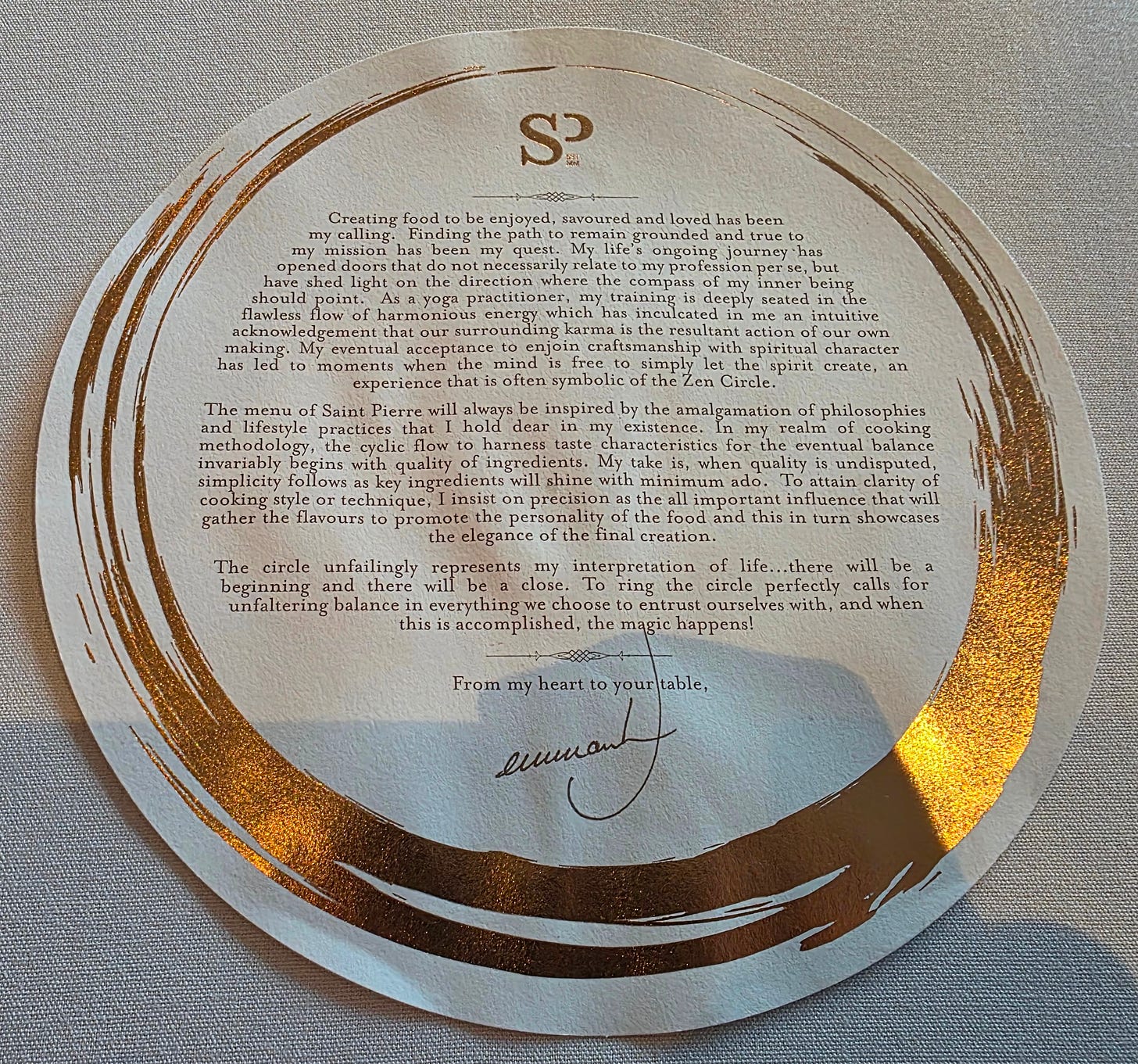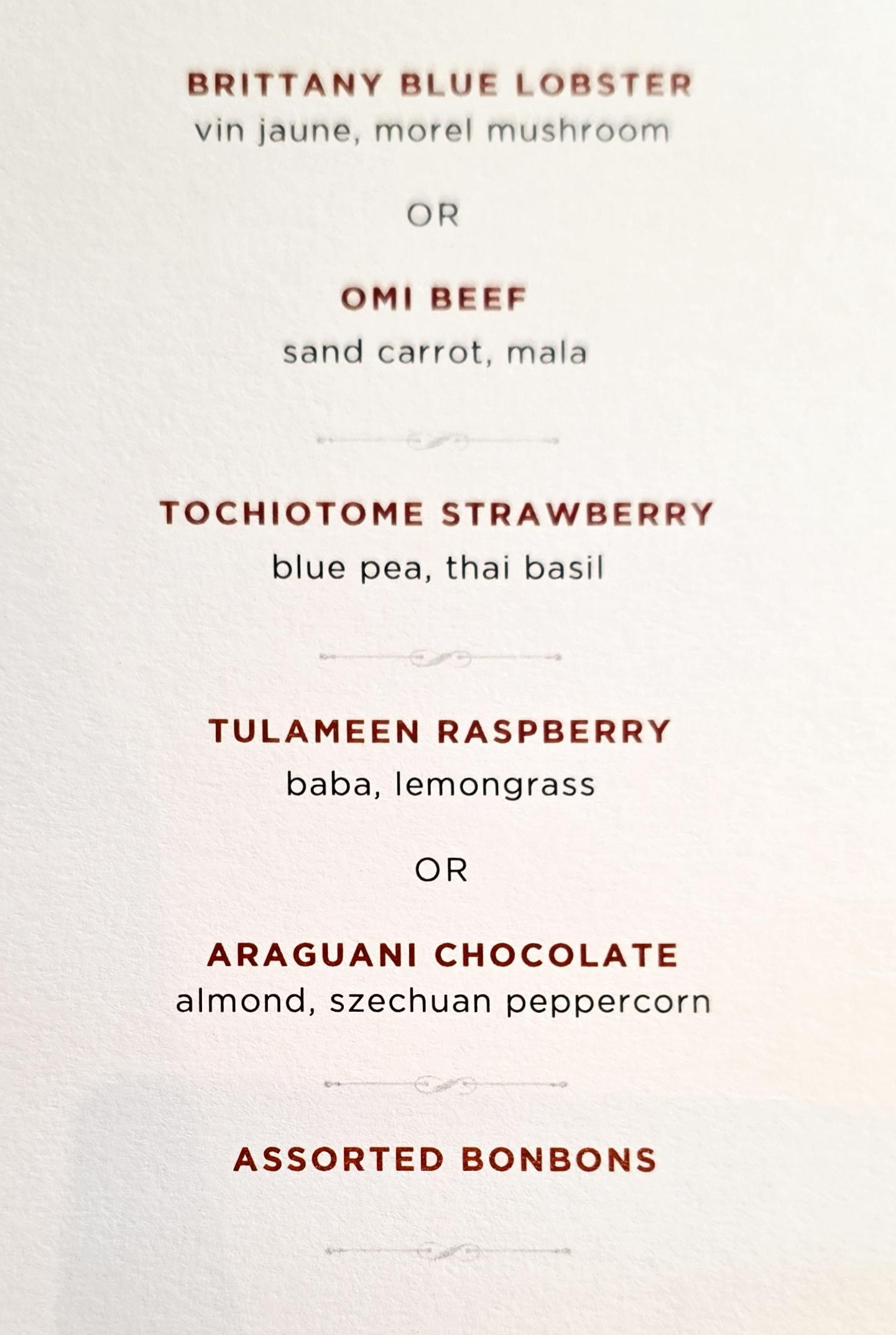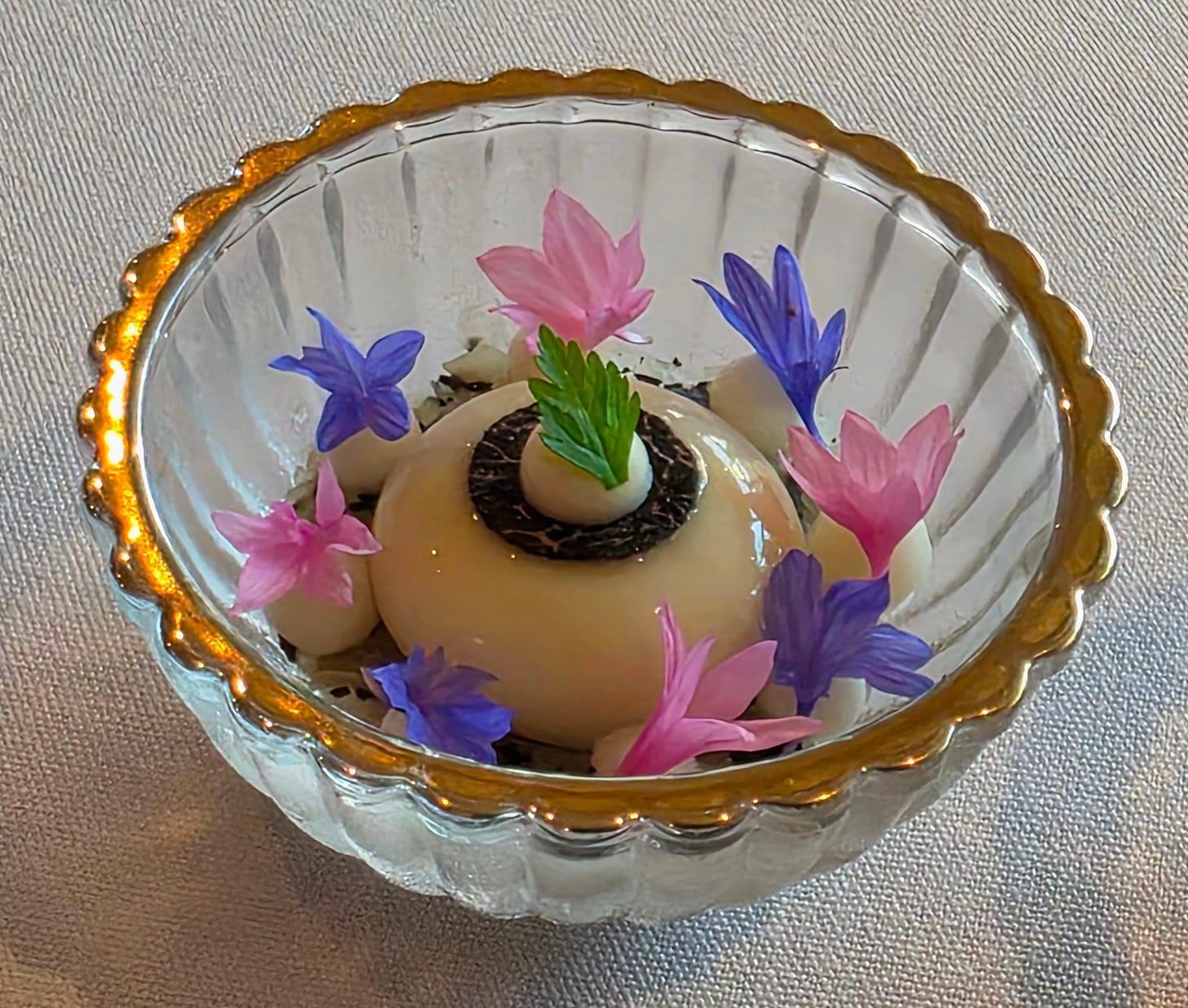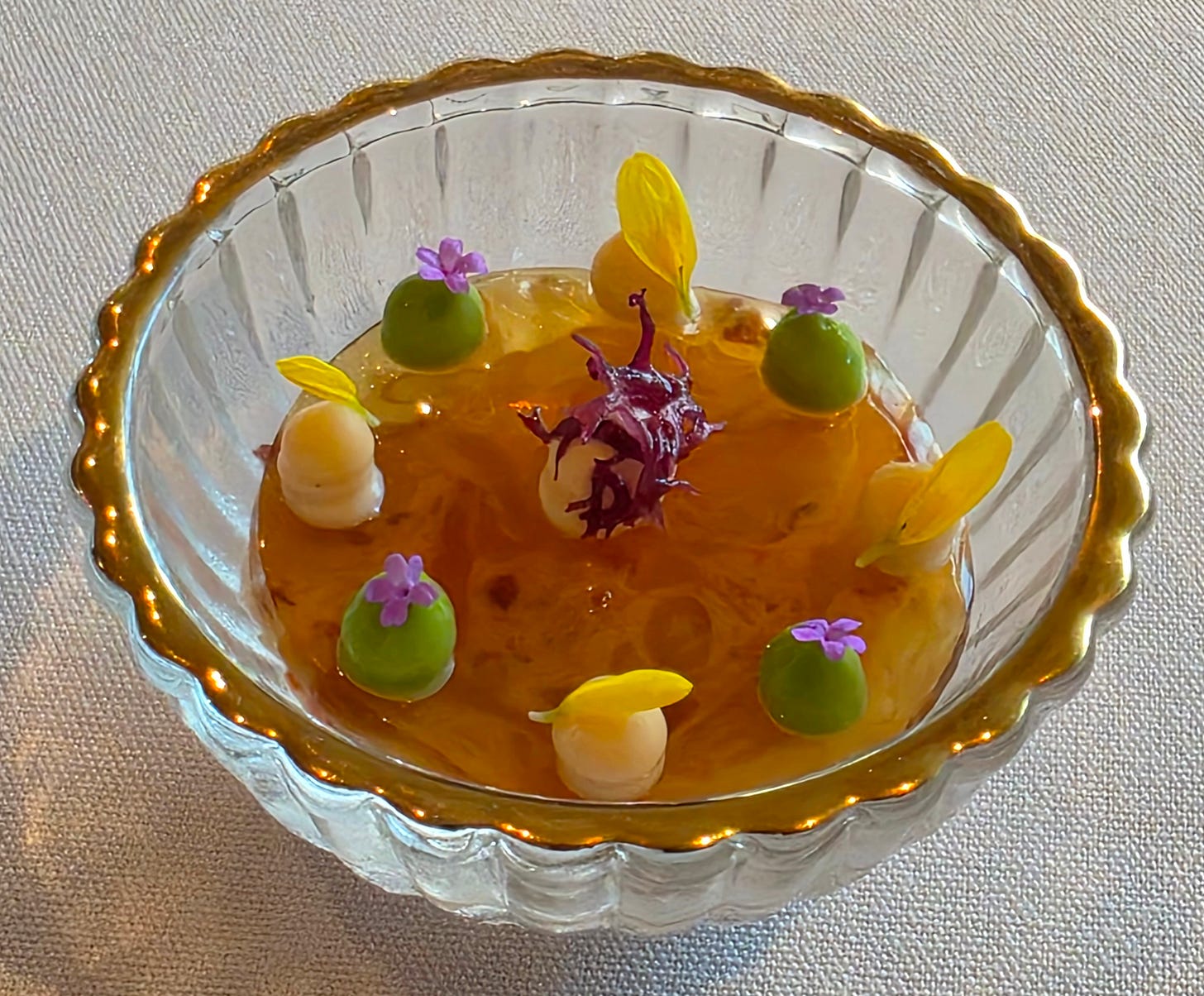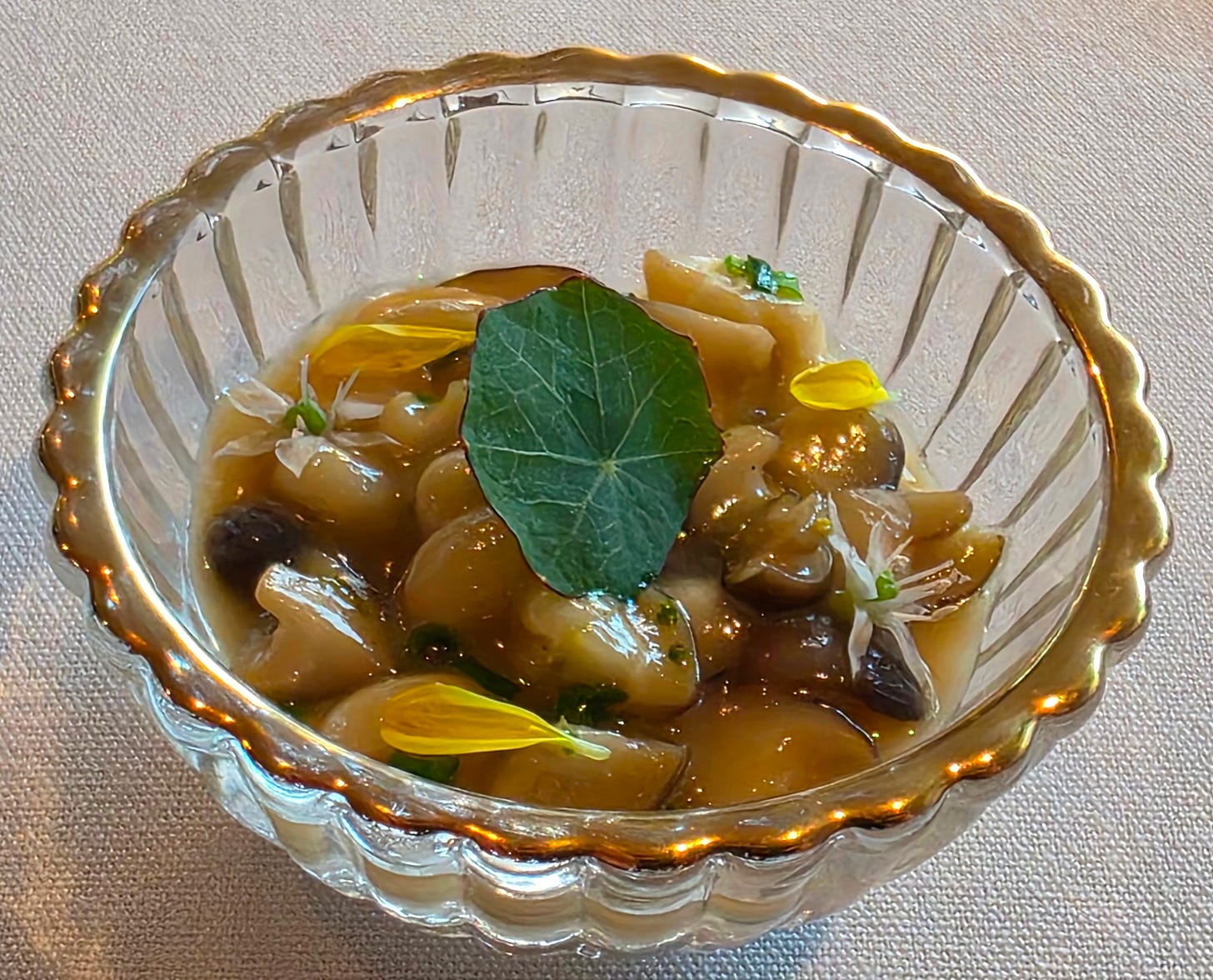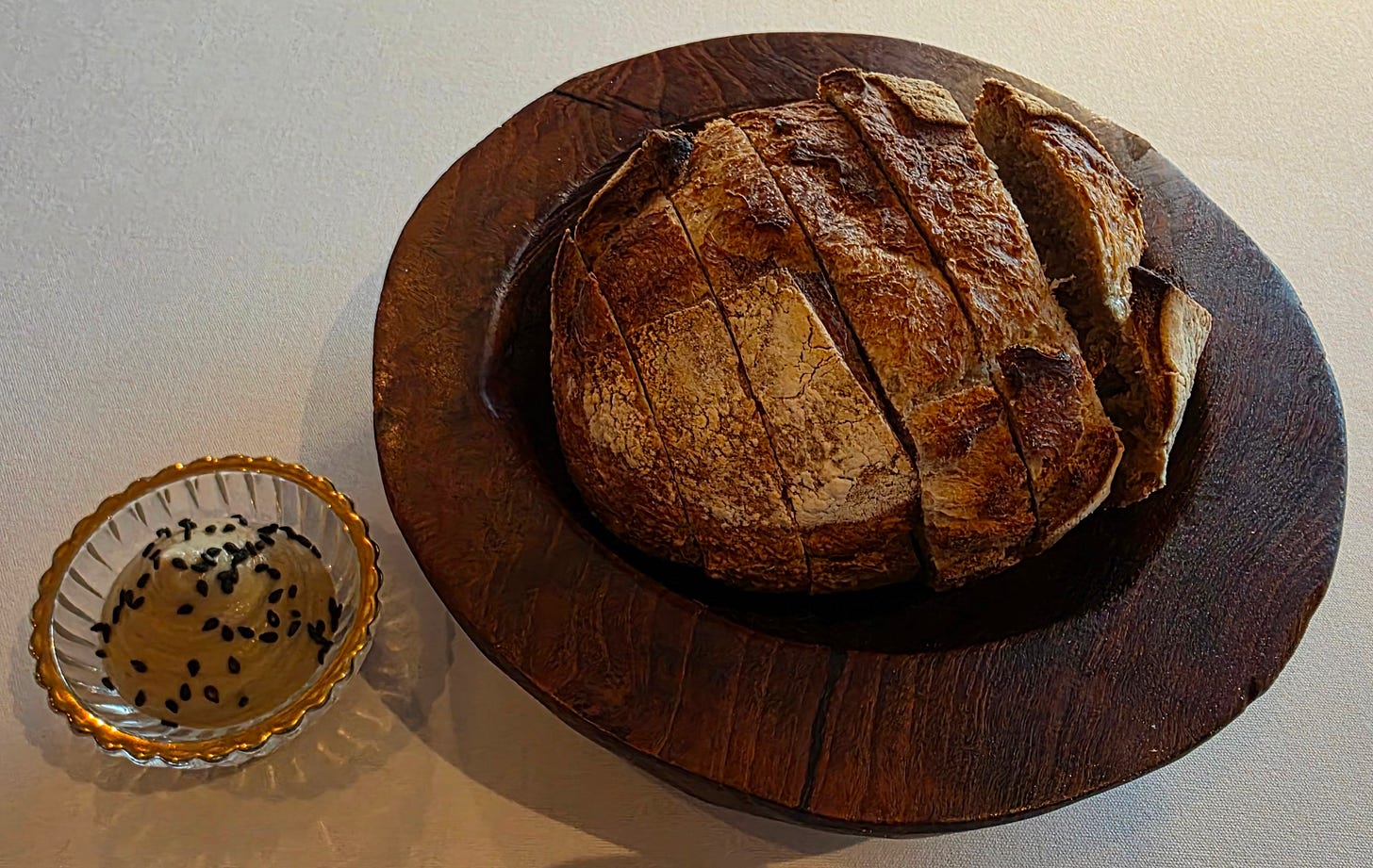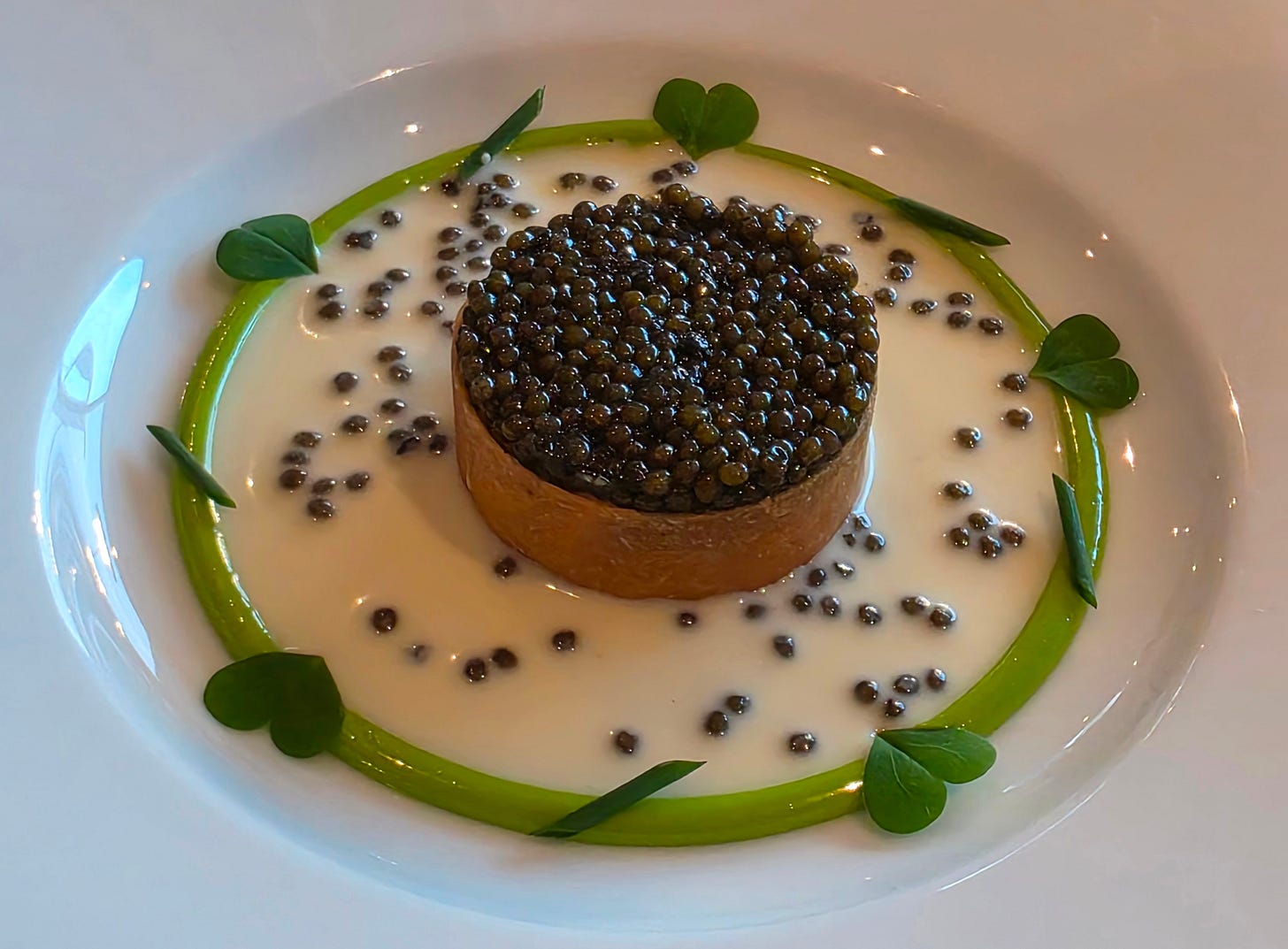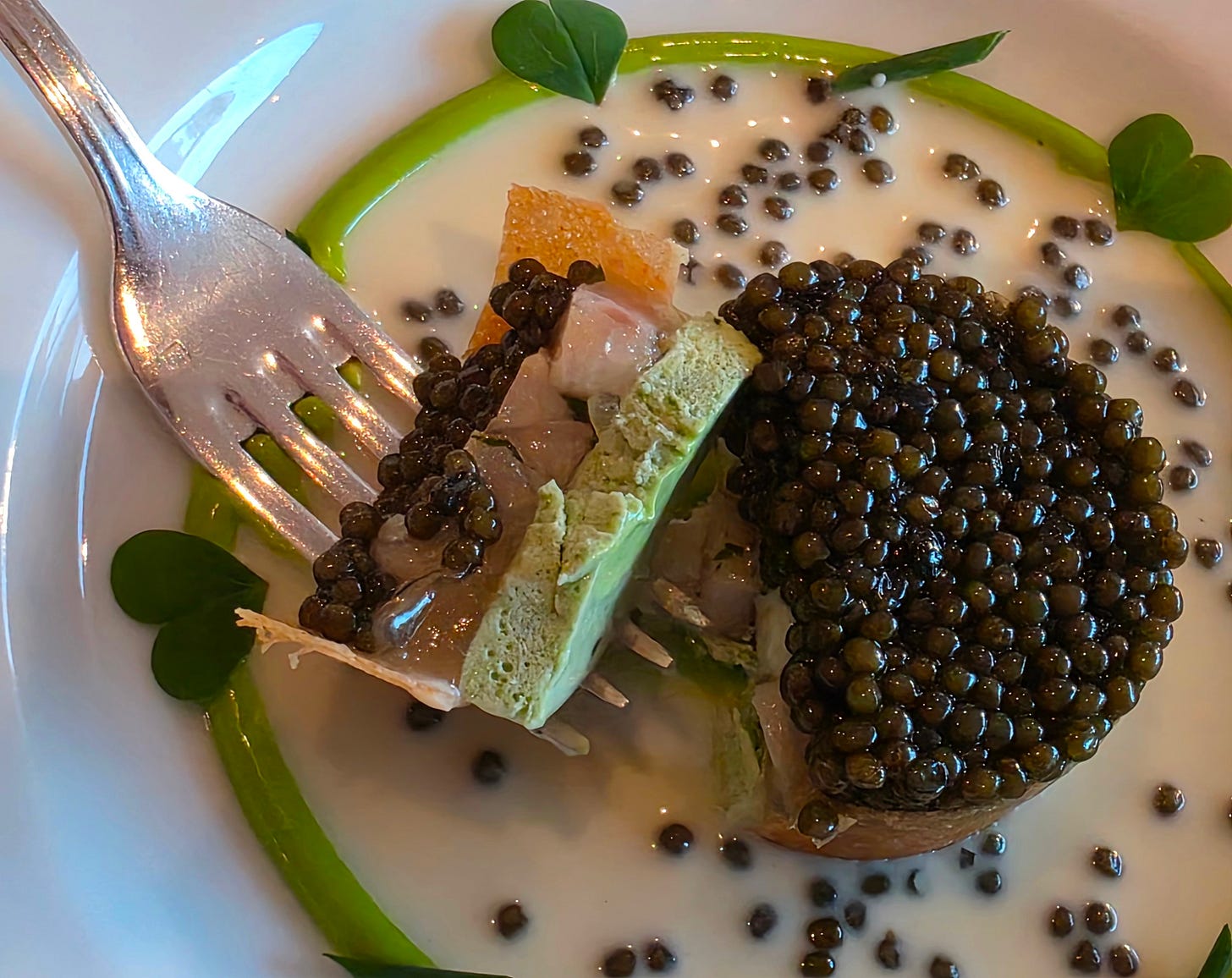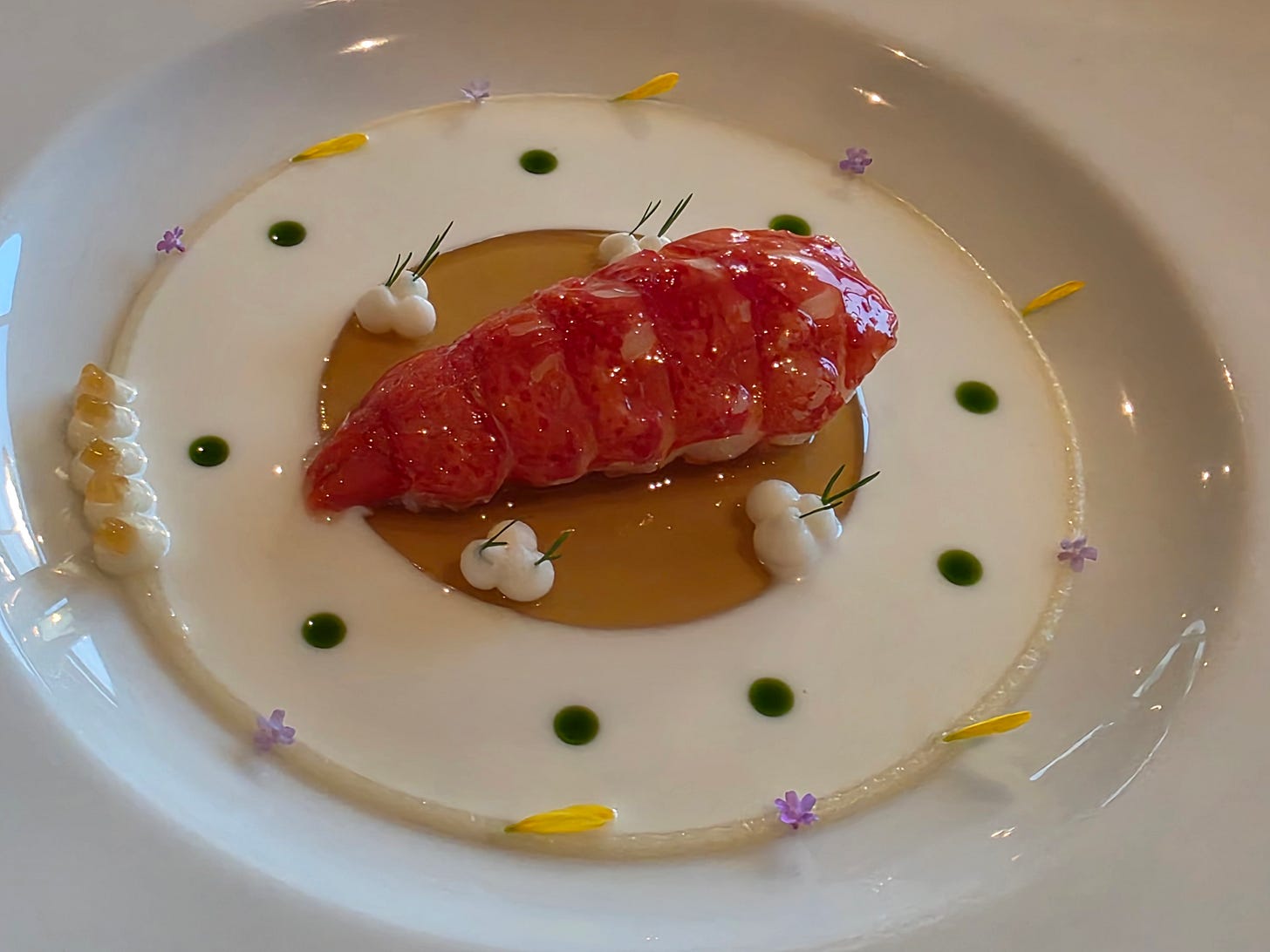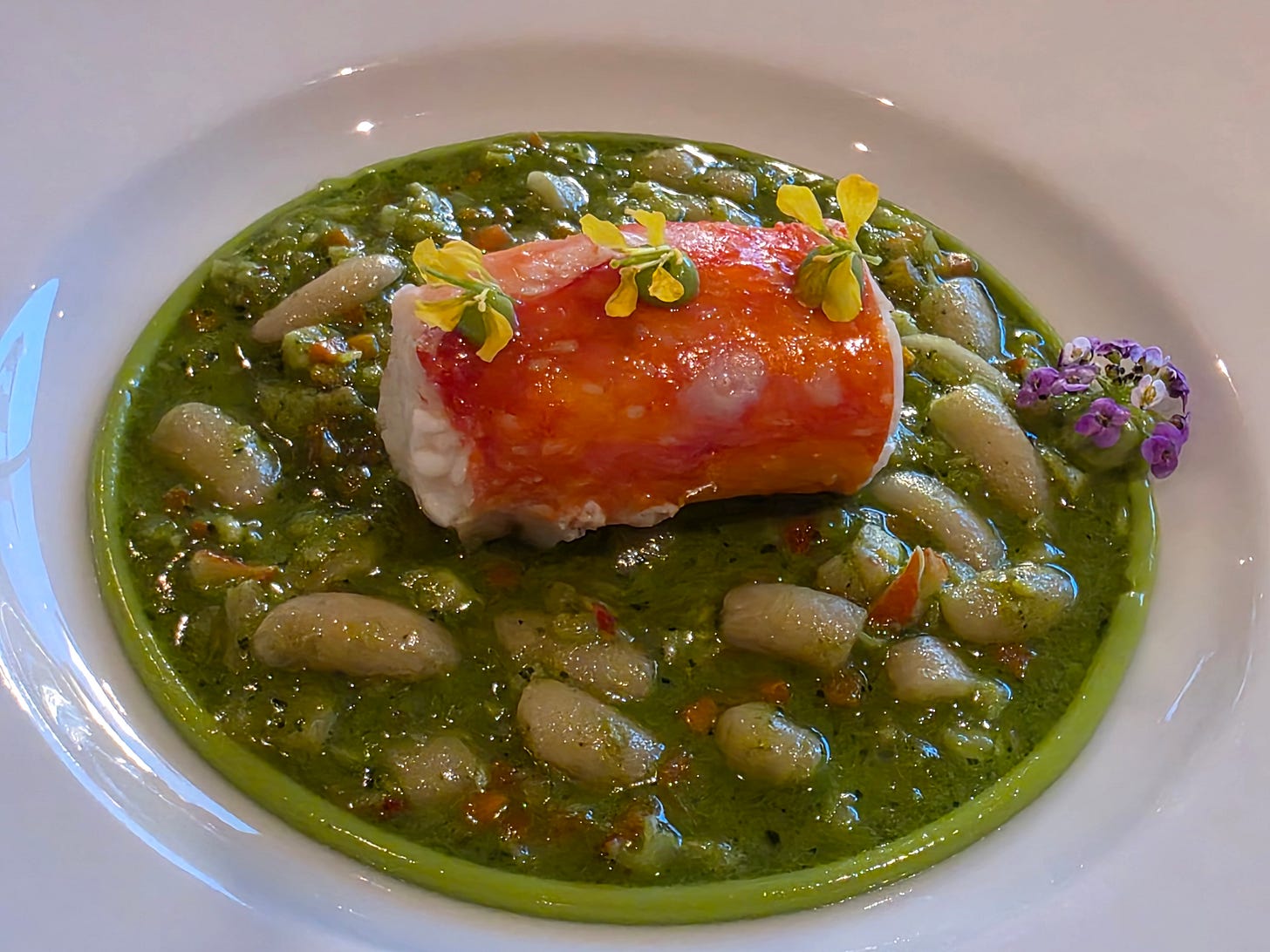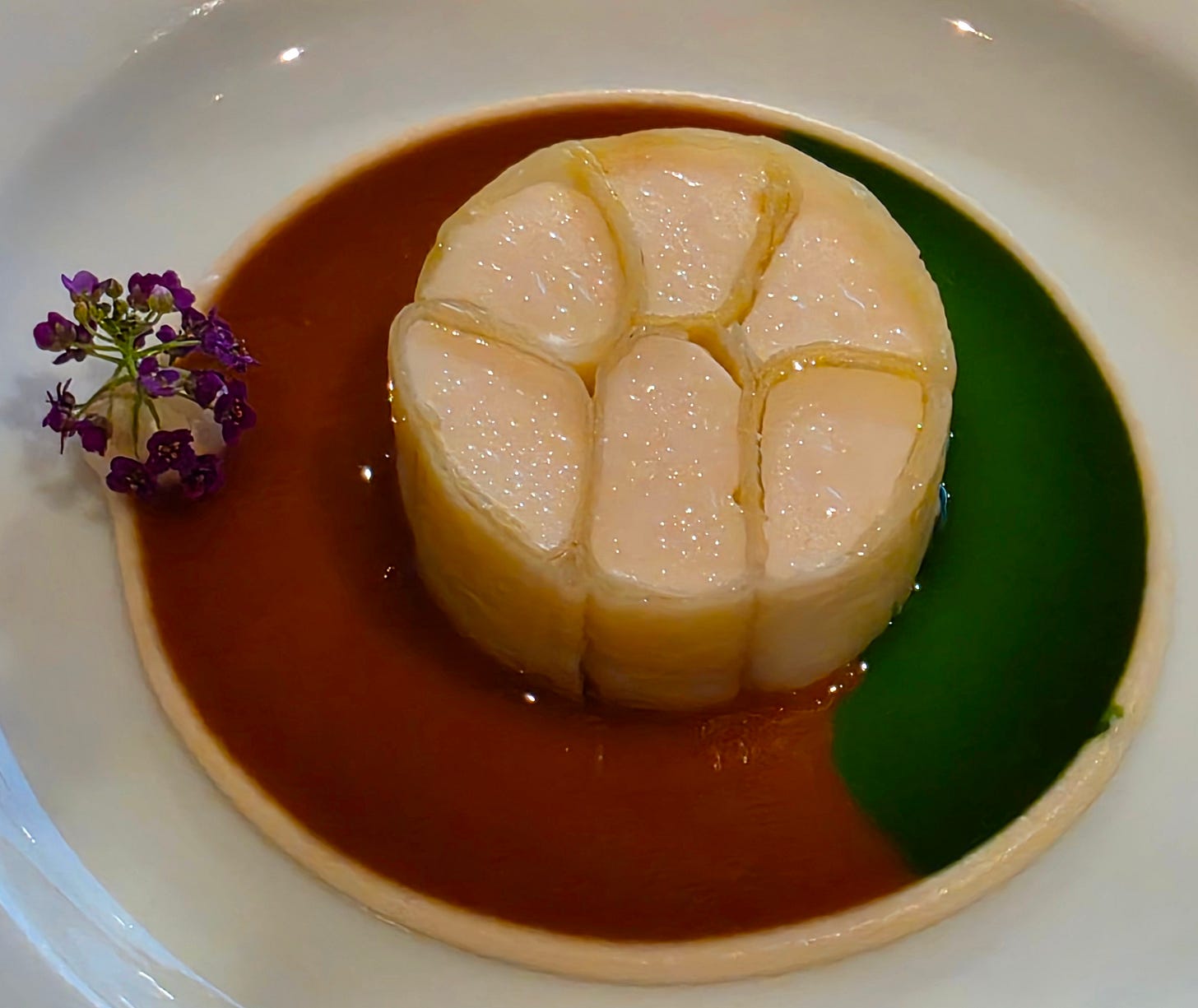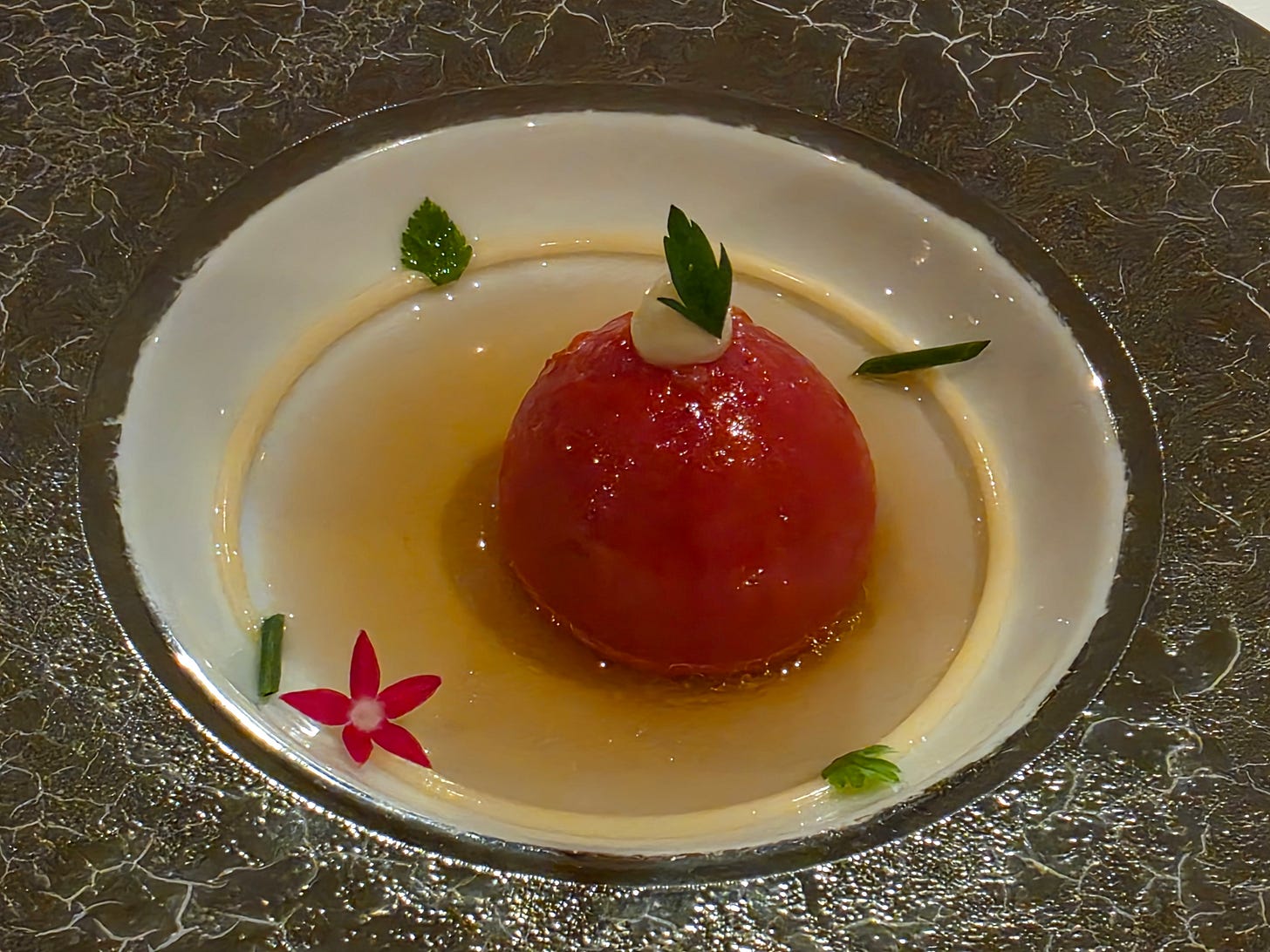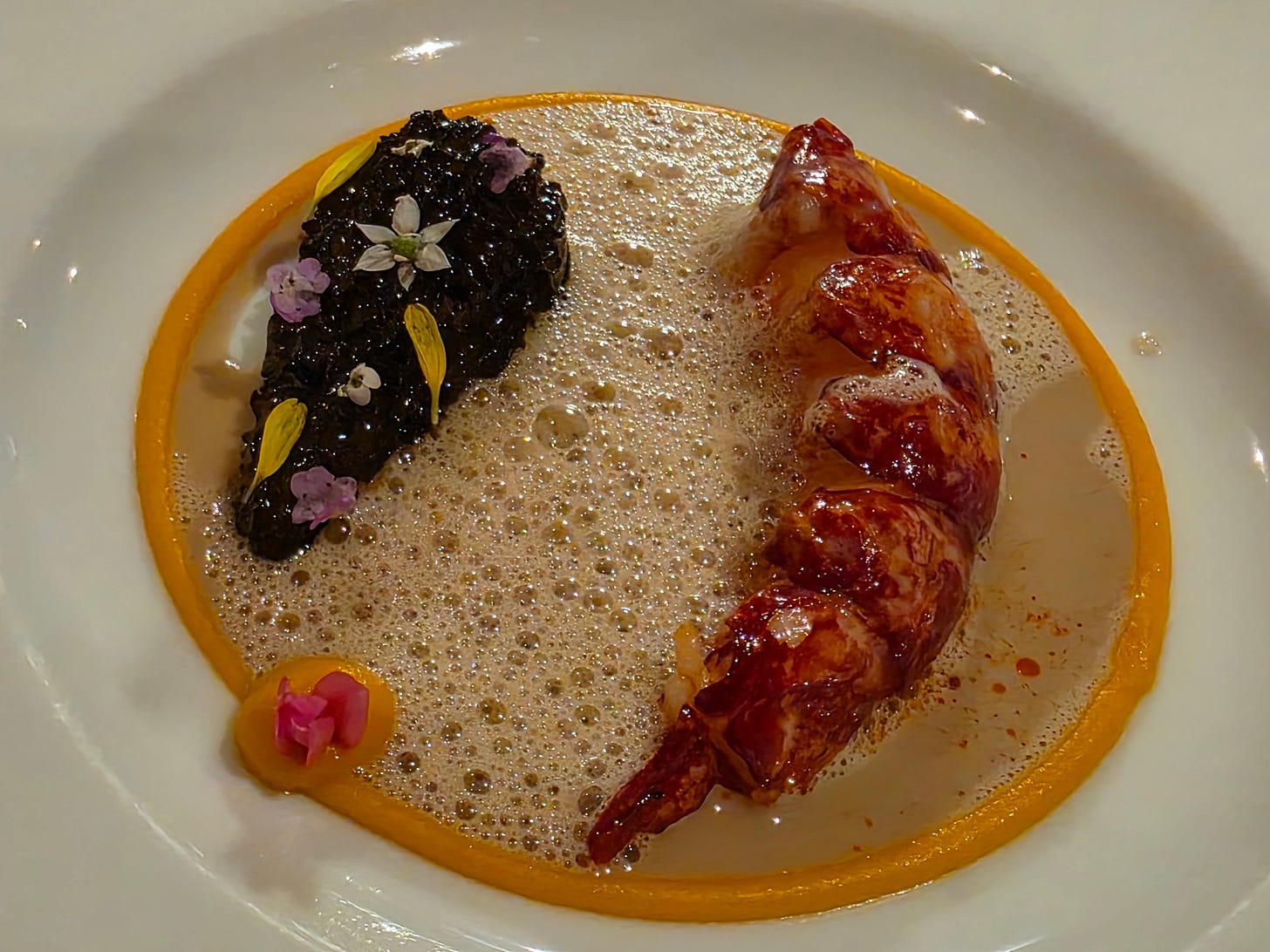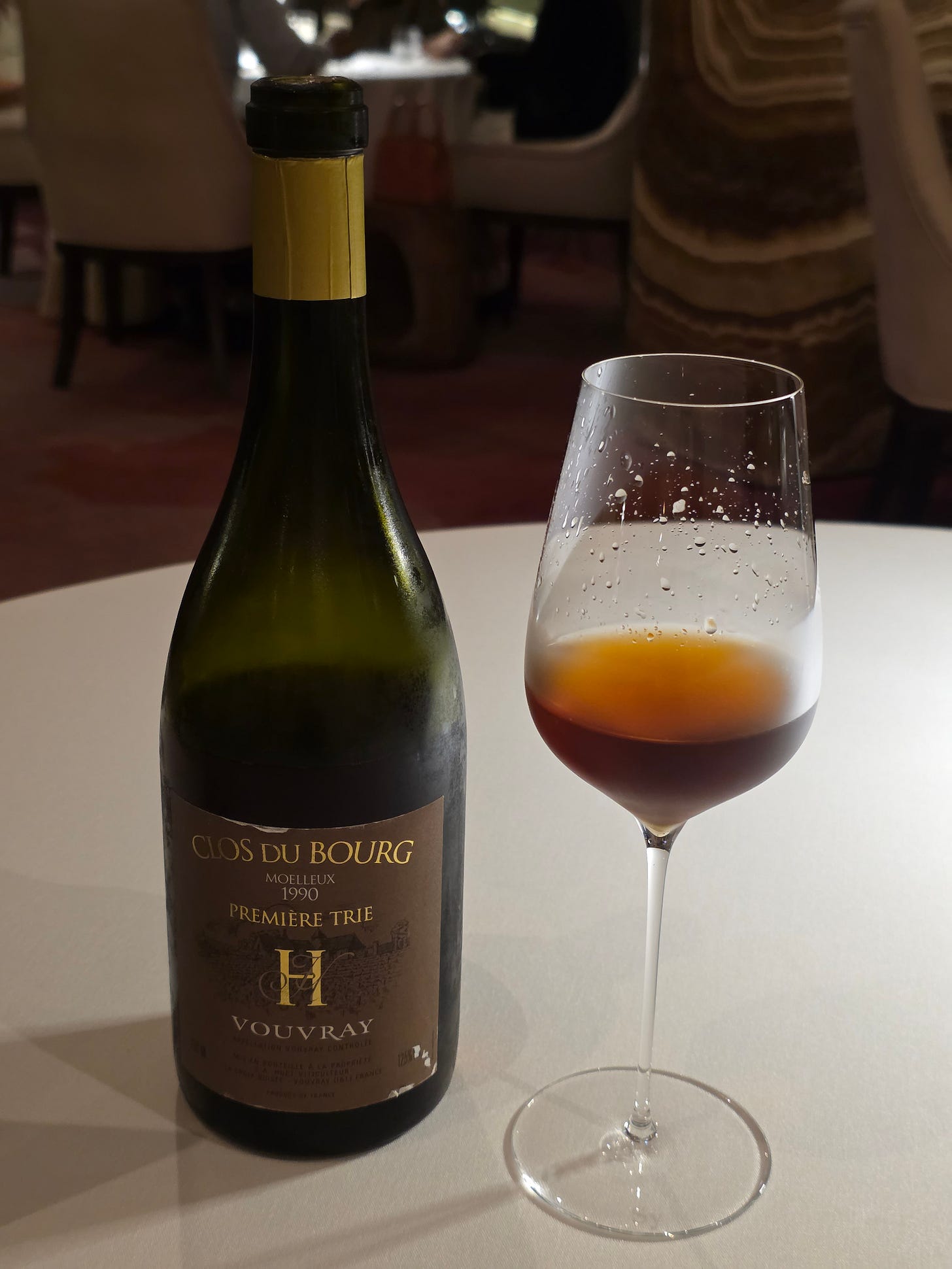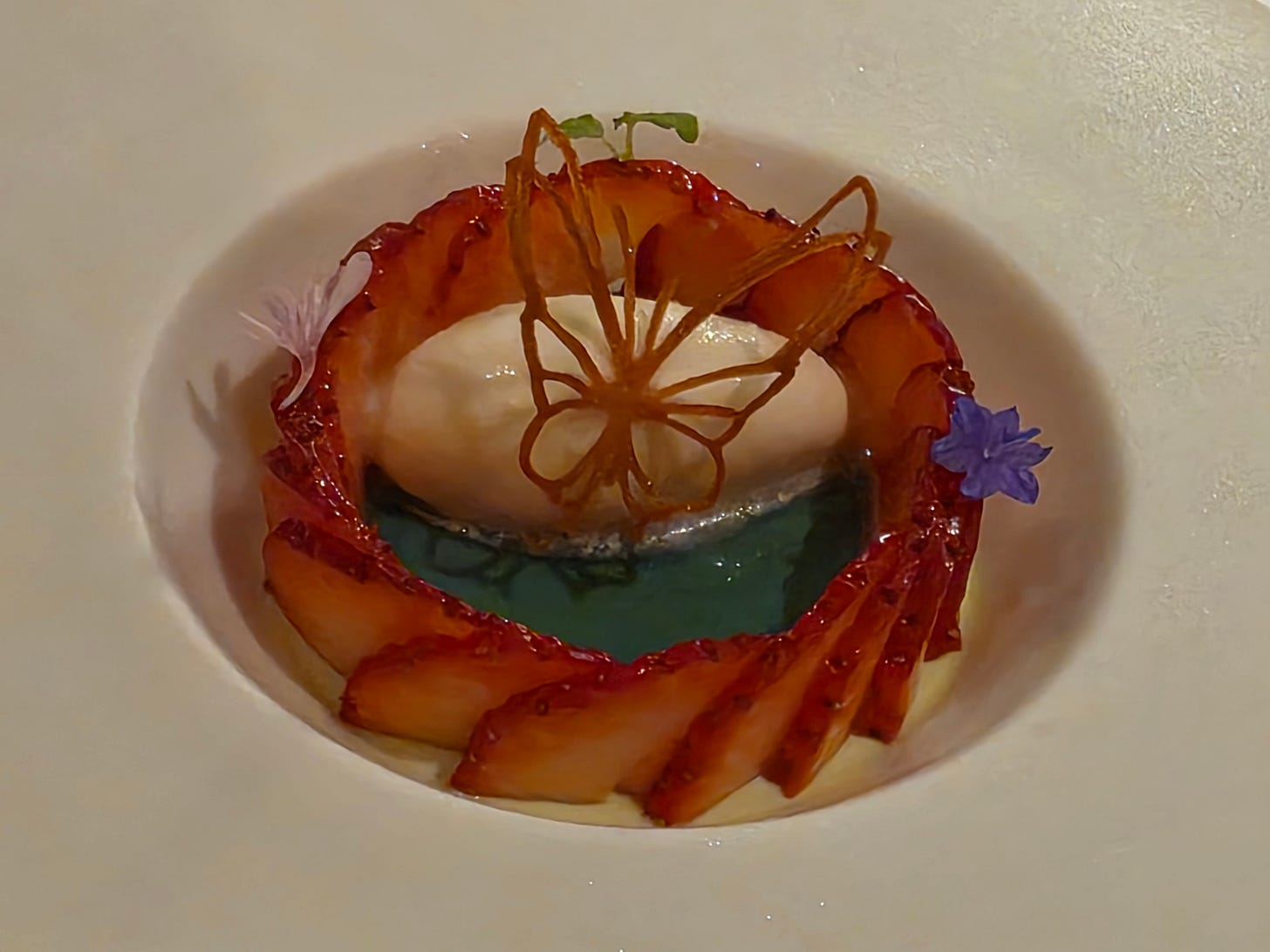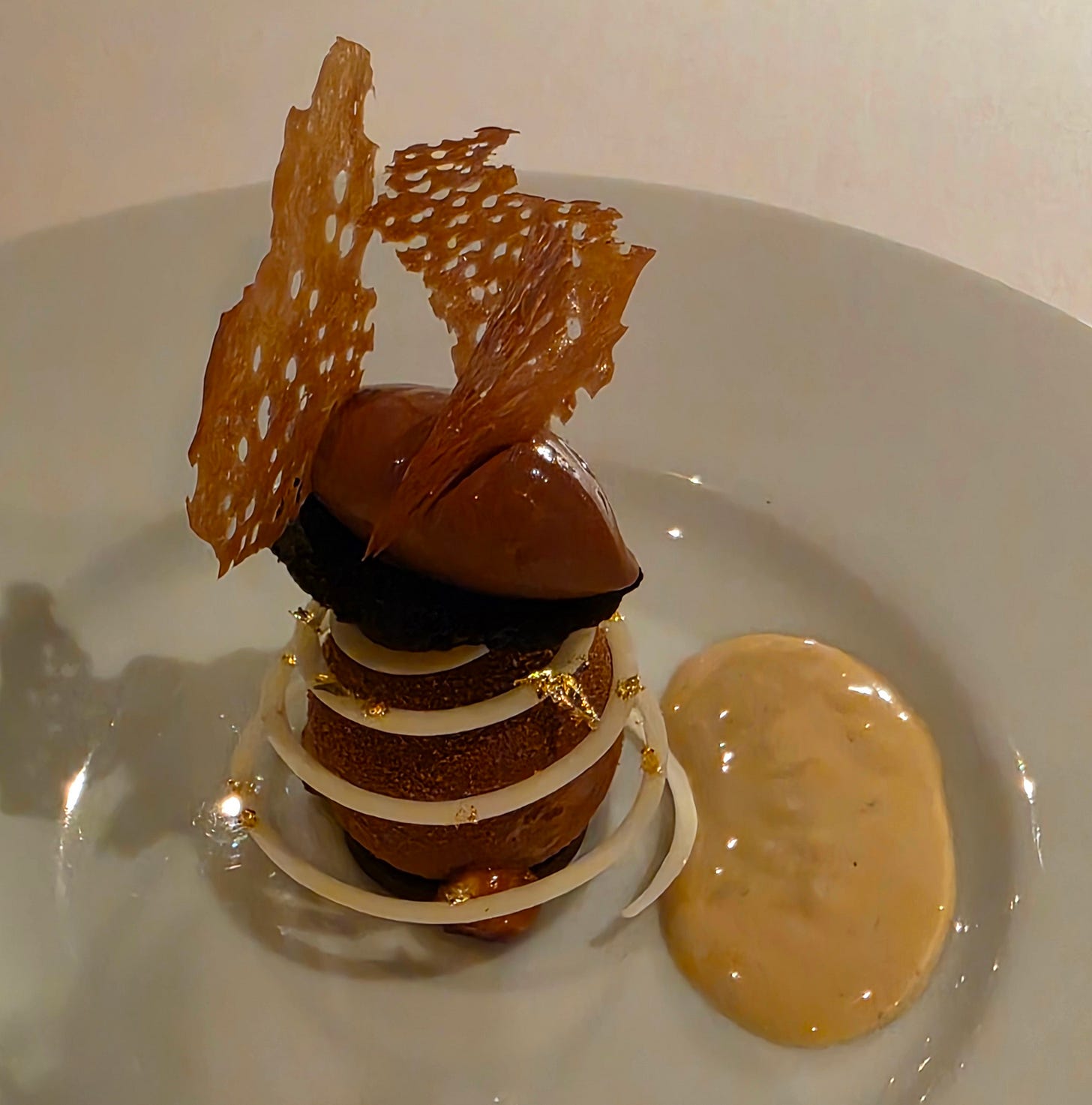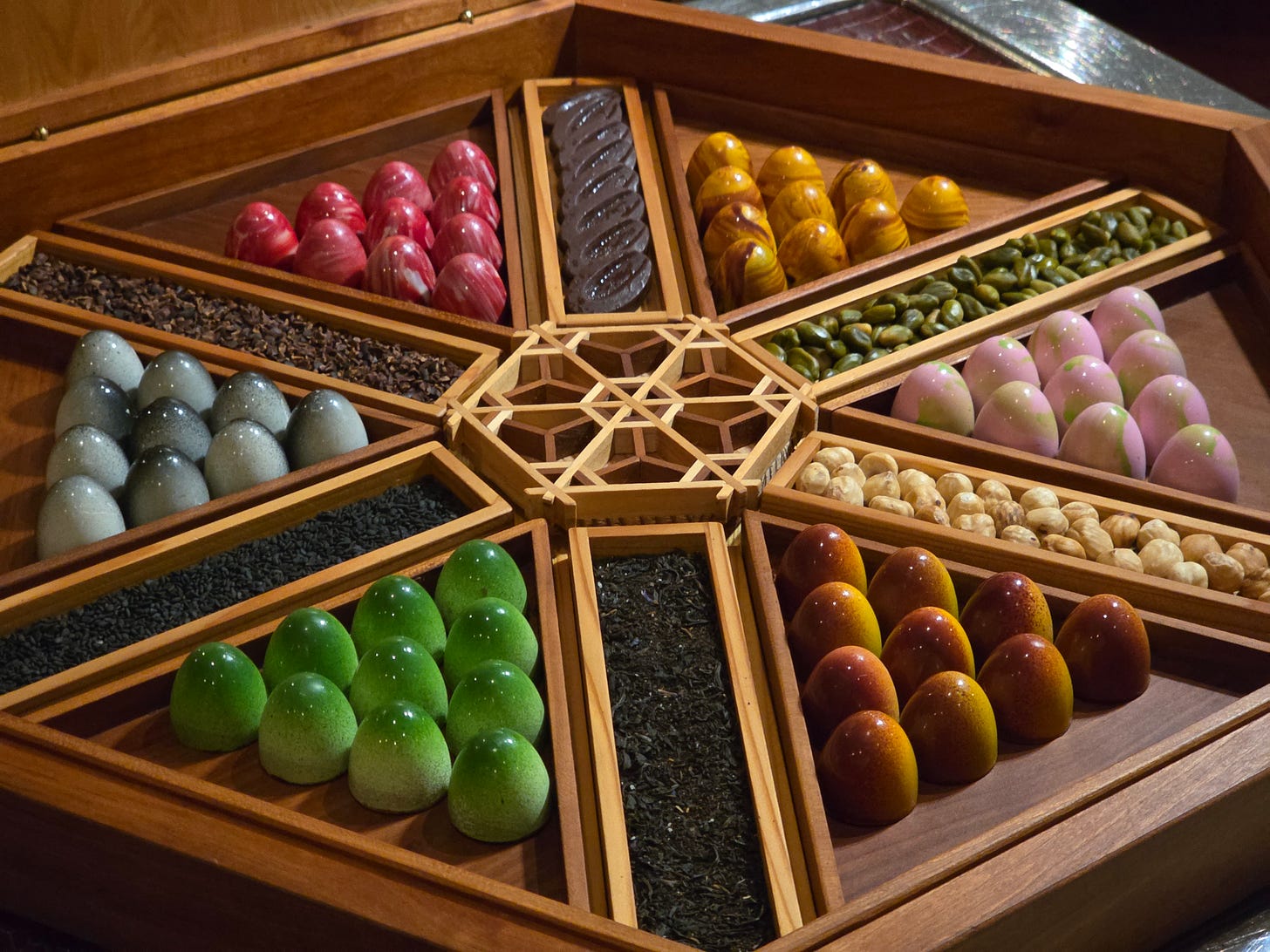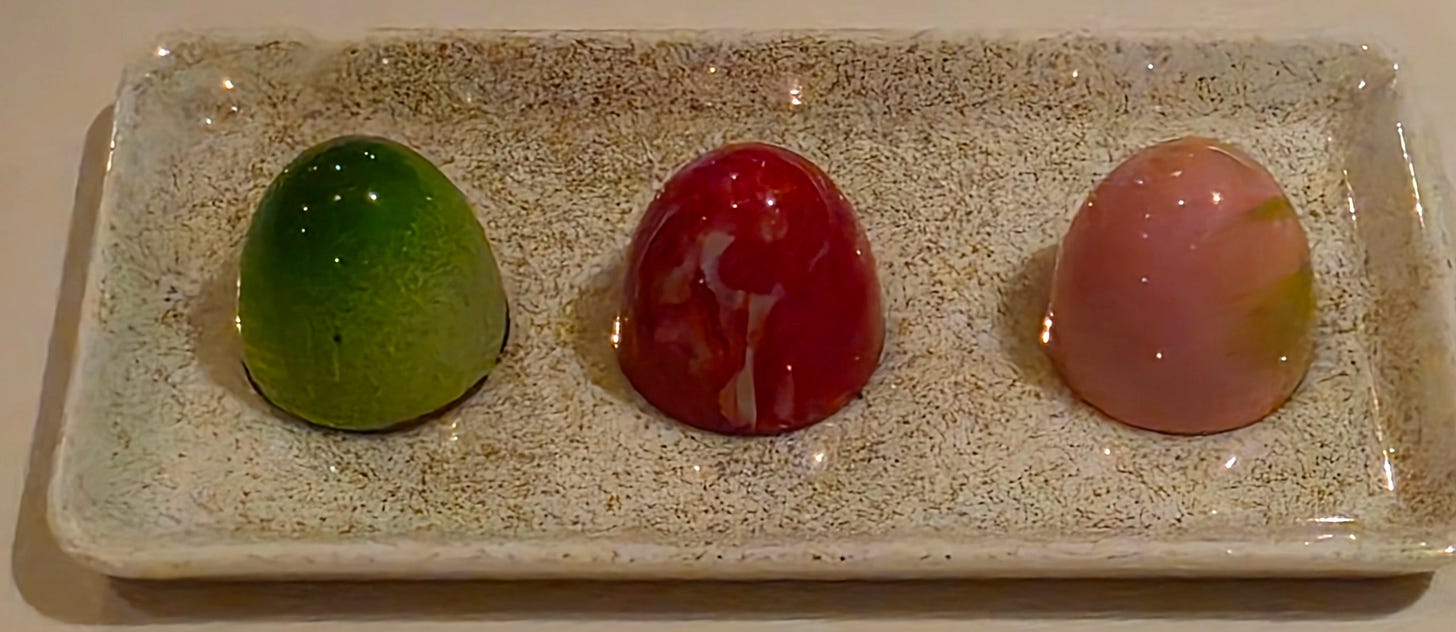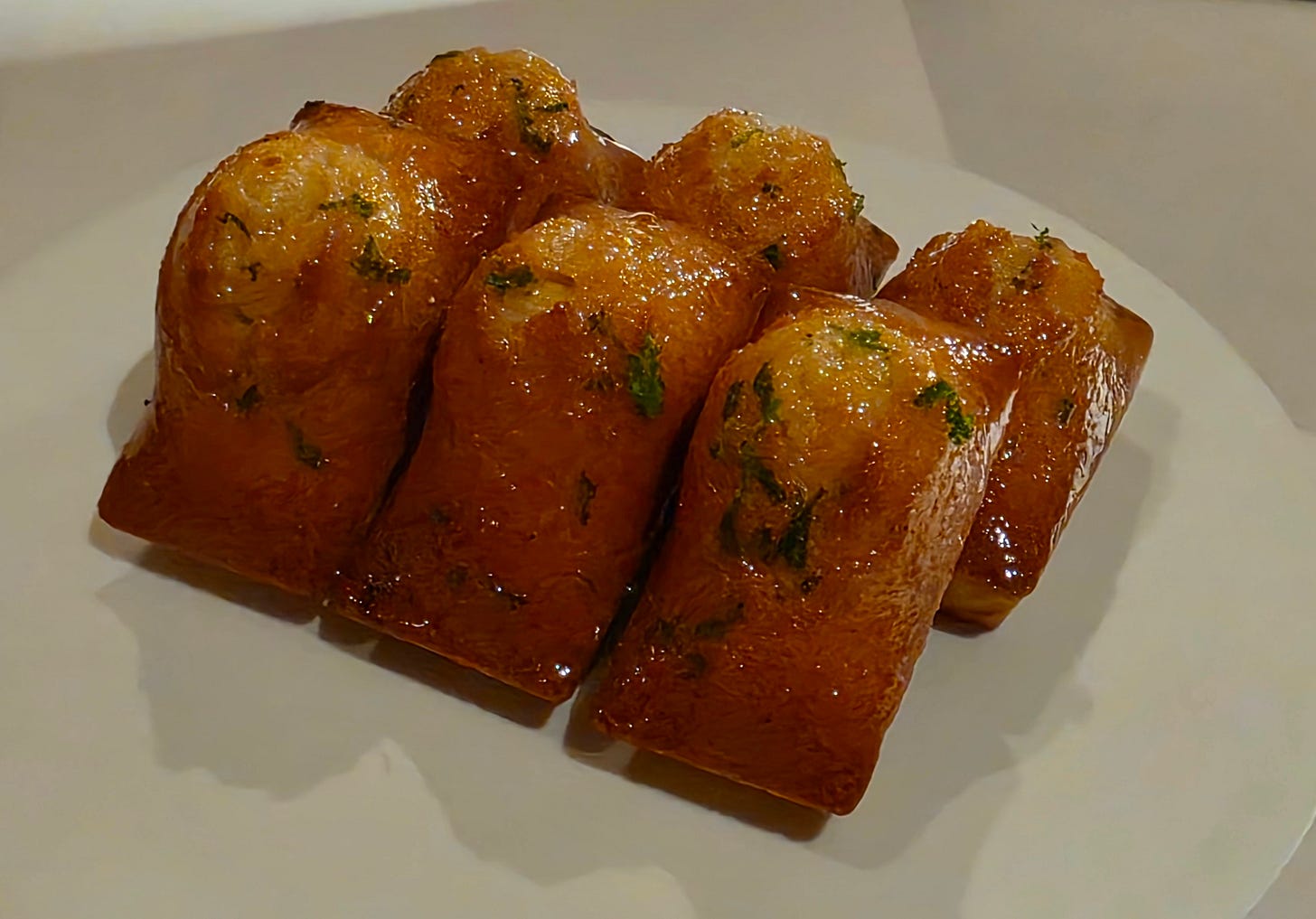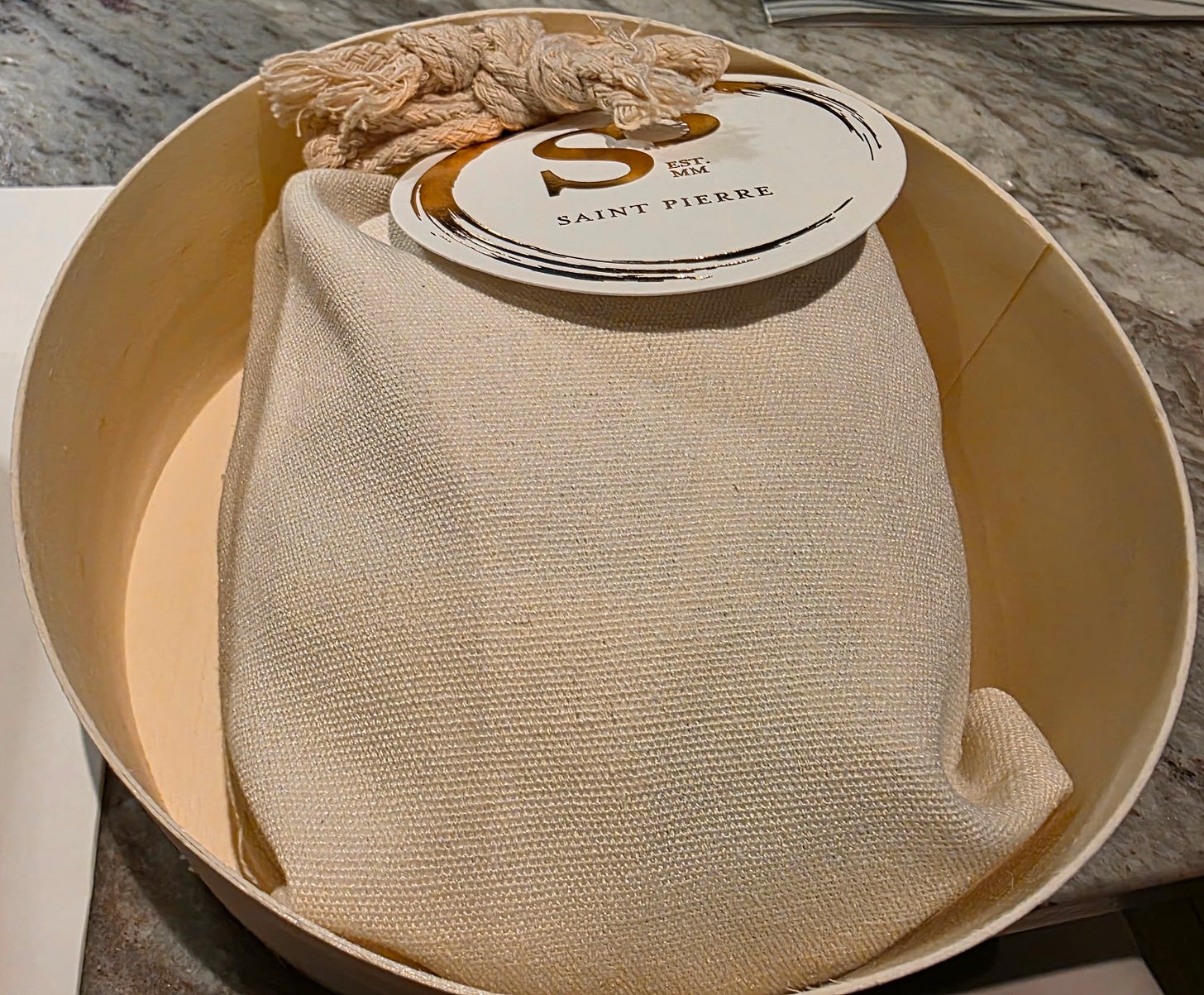Saint Pierre
A Magnificent Showcase of French Culinary Excellence in Singapore
After my experience at Les Amis and Odette, I have developed very high expectations for French dining in Singapore. Hearing good things about Saint Pierre, I decided to drop by for dinner.
Unlike Les Amis, which focused on keeping everything classical and purely French, Saint Pierre is a bit closer in philosophy to Odette. Executive Chef Emmanuel Stroobant sought to reflect his philosophy of "essence-centric cuisine," focusing on extracting the purest flavors from premium, seasonal ingredients sourced globally, and infusing them with the best of French technique. Since its inception in 2000, Saint Pierre has evolved through various locations and culinary phases, maintaining a reputation for excellence and innovation.
Chef Emmanuel, a Belgian-born chef, opened Saint Pierre in December 2000 with his Malaysian-Chinese wife, Edina Hong. Initially, the restaurant offered modern French cuisine with a focus on simplicity and organic ingredients. Stroobant’s extensive experience in Michelin-starred kitchens in Belgium, combined with over two decades in Asia, shaped his signature style—blending French techniques with subtle Asian accents. Over the years, he has remained the visionary behind Saint Pierre, overseeing its evolution and menu development. Under his leadership, the restaurant earned its first Michelin star in 2017 and a second in 2019, retaining two stars through to the present.
Notable milestones include its move to Sentosa’s Quayside Isle in 2013, where it briefly adopted a casual concept, and its relocation to One Fullerton in 2016, returning to fine-dining roots.
Saint Pierre’s history is uniquely tied to Emmanuel Stroobant’s enduring presence. Unlike restaurants with frequent chef turnovers, Saint Pierre has thrived under Stroobant’s vision. Stroobant’s partnership with his wife Edina Hong and collaborations with talents like Mathieu Escoffier have ensured its adaptability—whether experimenting with casual dining in 2013 or pioneering virtual dining experiences during the COVID-19 pandemic.
Saint Pierre can be a bit difficult to find, upstairs and past an awkward hallway at One Fullerton. The tiny 24 seat dining room has a front row view of the Marina Bay Sands complex.
Waiting at the table was an explanation of the inspirations behind Saint Pierre and the “Circle of Life” philosophy reminded me of Chef Zor Tan at Born.
The server presented me with the menu and the key choices were for the main course and the dessert. Despite being warned about the seafood-forward menu, I decided to go with the Brittany Blue Lobster for the main, and the chocolate dessert, as I was interested in how the Szechuan mala flavours interact with the chocolate.
The meal started soon after with the amuse bouche, each demonstrating the incredible precision and craftsmanship of the kitchen.
Shaved Jerusalem artichoke tartare with a bubble of white miso emulsion topped with black truffle and a few drops of verbena jelly. Strong truffle flavours, combined with the burst of chilled miso umami and a hit of sweet and sour from the verbena jelly.
Lobster and pomelo emulsion topped with a layer of lobster jelly and bubbles of concentrated seaweed and herbal flavours. A truly neat flavour and texture combination here. I have never seen that combination before, but I quite liked the combination of lobster and pomelo.
A warm silky egg chawanmushi custard, topped with small pieces of shimeji mushrooms and a touch of sudachi lime juice to add just a bit of acid.
Next came the bread course, with a loaf of their signature rye sourdough, and a black sesame studded spread. It may have been a compound butter - maybe with some miso, but I wasn’t a fan.
The first course was a tart containing a layer of herb mousse infused with wasabi, a layer of smoked eel jelly, and a layer of Cristal caviar, sauced with a champagne and caviar sauce and a ring of herb and green pea jelly to hold the sauce in place. I never thought I’d like smoked eel, nor did I think that caviar and wasabi go together, but the combination of brininess from the caviar, smoky fishiness from the eel and the pungency of the wasabi and herb jelly made for a refreshing combination.
The second course was an Australian marron. Oddly, I’ve never tried marron before, and it was the second time in two days that I saw it on a menu. Marron are a large freshwater crayfish from Western Australia. It’s sized somewhere between a small Atlantic lobster and a giant tiger shrimp, and flavour and texture-wise, it’s akin to a very tender lobster tail. The marron tail was double sauced on a layer of briny crustacean jelly, made from the crushed marron shells, then surrounded with a sauce made from fermented milk from Brittany, adding a bit of tanginess to the dish. On top of the sauce, drops of dill oil to add a bit of wasabi-like pungency. Holding in the sauce was a ring made from a Jerusalem Artichoke paste. The marron tail was a big hit, although the tanginess of the fermented milk sauce was a bit off-putting.
Next, a piece of the deshelled leg meat from a Shizuka king crab from Hokkaido, lightly poached in chicken stock and served on a canelli bean casserole with a bit of green curry flavouring. In contrast to most other bean dishes where the beans are cooked until soft and nearly mushy, the beans here were served al dente, with a bit of crunch in the mouth. Again, really great flavour and texture combinations, with the bean casserole bringing out the sweetness of the crab meat. Delicious!
The next dish came looking a bit like a head of garlic. Consisting of a light, fluffy scallop mousse, delicately wrapped with charred leek, double sauced with parsley oil and a crustacean reduction with red chilis. Incredibly light and fluffy, but a bit devoid of texture. The mousse served as a good base to soak up the flavours of the sauces.
A palate cleanser before the main, a baked tomato topped with a dab of miso emulsion in a galangal broth. Deskinned tomato, intensely sweet in a herbal broth, reminding me of Thai flavours - lemongrass and a hint of lime kefir.
Arriving at the main, a poached Brittany Blue Lobster tail, served with a morel mushroom stuffed with the rest of the lobster meat made into a mousse. Sauced with a mushroom vin jaune held inside a ring of carrot puree. Amazing execution here. Morel mushroom soft with just a bit of spring. The lobster tail was perfectly poached and tender pairing well with the hit of acid from the sauce.
Before moving to dessert, a shot of warm herbal tea made from burdock root and Japanese spices, served as an earthy palate cleanser
Glass of dessert wine from the Loire Valley. Flavours of raisin and apricot, while being extremely concentrated and intensely sweet on the palate. Not as syrupy as port, but a great expression of French dessert wine.
Moving to the pre-dessert, a layer of Thai Basil custard, topped with a Butterfly Pea jelly, a scoop of olive oil sorbet, all surrounded by a ring made from slices of intensely juicy Japanese strawberries topped with a delicate butterfly biscuit as ornamentation. Neat, and the standout here was really the intense sweetness and juiciness of the strawberries.
Dessert was a variety of textures of Araguani chocolate - formed into a sorbet, a thin leaf, a dense mousse ball, a spiral of chocolate flake, topped with a hazelnut crisp and a thick Szechuan peppercorn sauce on the side. The mala flavour was balanced by the creaminess of the sauce, and was more of a “hint” of mala, versus the intense kick typical of Szechuan hotpot. The focus on combination of contrasting textures and altogether, the dessert reminded me of a giant Ferrero Rocher.
Moving on to Saint Pierre’s take on petit fours, a trolley arrived looking like a Chinese Checkers marble set. I went with a green pistachio flavoured chocolate, a raspberry flavoured chocolate and an earl grey and bergamot filled chocolate.
I thought we were done after the petit fours, but a plate of brown butter financiers arrived to end the meal. I was pretty full and managed to eat one. Exactly what I’d expect - warm sweet financiers brushed with some nutty browned butter,
Finally, as I was preparing to leave, they gave me a parting gift of a loaf of their sourdough.
Overall, I was a huge fan of Saint Pierre. I haven’t seen this level of precision in a while, and the focus on technique reminded me a lot of Robuchon or Les Amis. Chef Emmanuel was out chatting with guests, talking about the food and his inspirations and making sure that all his guests were having a good time. I could see a lot of emphasis on classical French techniques, with the best ingredients from all over Asia. Definitely ranks among the best French restaurants I’ve had in this year.
Total Damage: 545 SGD/1 person


